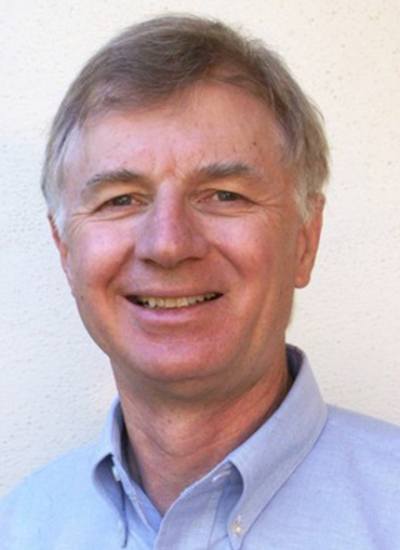CURRENT AND FUTURE RESEARCH PLANS Renquist lab research can be broken into 4 foci that target the pathophysiologies of obesity (insulin resistance, hypertension, and cancer) or aim to better understand energy balance (food intake and energy expenditure) to combat the obesity epidemic. 1) Metabolic Syndrome: Excess hepatic lipid accumulation, common in obesity, is directly related to the incidence and severity of Type II Diabetes Mellitus and hypertension. Hepatic lipid accumulation depolarizes the hepatocyte. To understand the role of hepatocyte membrane potential in mediating the pathophysiologies of obesity, we use tissue specific knockout, pharmacological, and mouse models with adenovirus induced ion channel expression. Through this research we have found that obesity changes hepatocyte neurotransmitter release to affect activity of the hepatic vagal afferent nerve. This research has been supported by competitive grants from the Arizona Biomedical Research Commission and The American Heart Association. Primary hypothesis: Hepatic membrane potential is communicated through the peripheral nervous system to affect serum glucoregulatory hormones, peripheral tissue glucose uptake, and blood pressure. 2) Targeted cell ablation. In two grants funded by Found Animals Foundation, we have focused on inducing permanent sterility by selectively delivering a GnRH targeted toxin to GnRH receptive gonadotropes (A strategy developed by Terry Nett, CSU). The cancer field is demanding delivery systems that improve ligand or antibody directed therapeutics. Many cancers (e.g. breast, ovarian, melanoma, pancreatic, and colorectal) express GnRH receptors. Thus, effective GnRH-targeted toxins can also be directed to target cancer. Two issues have limited the application of GnRH targeted toxins. First, the potential for effects in ‘non-targeted’ GnRH expressing cells. Second, the endosomal sequestration of internalized toxins. By separately targeting an endosome disrupter with one G-protein coupled receptor (GPCR) ligand and the toxin with another GPCR ligand, we eliminate both limitations. By using this modification of the delivery system to maximize endosome escape, we have increased in vitro efficacy more than 1,000,000,000 times. This improvement in efficacy helped our research team to secure a DoD grant aimed applying this strategy to prostate cancer. Importantly, GnRH targeted doxorubicin has recently been approved by the FDA for treatment of cancer. We fully expect that our targeted endosome disrupters would enhance the efficacy of this FDA approved treatment while improving specificity and decreasing the potential for side effects. Primary hypothesis: Optimizing GnRH-toxin conjugates to enhance endosome escape will allow for selective ablation of target cells encouraging the development of improved ligand directed chemotherapeutics and an injectable sterilant 3) Control of food intake and milk production. Understanding the mechanisms that regulate food intake under differing environmental conditions provides opportunities to pharmacologically manipulate phagic drive to treat obesity. Heat stress depresses food intake dependent on histamine signaling. My lab aims to understand how the neuroendocrine/endocrine suppression of visceral blood flow, a physiological adaptation to encourage heat loss by increasing cutaneous blood flow, depresses phagic drive. This USDA NIFA funded project is focused on the dairy cow as our target species, but we employ mouse models and see this as an opportunity to better understand the control of food intake. We use mice that lack histamine receptors to focus on the role of central nervous system histamine signaling in the control of blood flow to the digestive tract and mammary gland. Therapeutics aimed at suppressing visceral blood flow may have application in addressing the obesity epidemic. Primary hypothesis: A decrease in blood flow to the digestive tract and mammary gland is responsible for a decrease in food intake and milk production common to heat stress. 4) Energy Expenditure. I developed an assay to measure the metabolic rate of embryonic zebrafish for application in drug and gene discovery. Since joining the University of Arizona, I have secured funding from USDA Western Regional Aquaculture Center and USDA NIFA funding to apply this assay to identify fish that are genetically superior for growth. We further showed that by measuring the metabolic rate of skeletal muscle biopsies from adult fish, we could identify the fish that were more feed efficient. Skeletal muscle biopsies from adult feed efficient fish were less metabolically active. Recently, we have initiated studies using tissue biopsies from homeothermic mice. This research will allow us to assess the tissue specific response to physiological perturbations (e.g. exercise, diet, obesity, fasting). Since insulin and leptin both increase energy expenditure, we expect that assays performed in tissue explant from homeotherms may allow for screening of insulin and leptin sensitizers in a more physiologically relevant model. We further propose this this assay could be a tool to assess insulin or leptin resistance and drug response in patient biopsies. Primary hypothesis: This assay designed for high throughput metabolic rate determination may be applied to improve growth and feed efficiency in production animals, improve drug development and gene discovery in biomedical models, or personalize medicine for patients. Keywords: Obesity, Metabolic Syndrome, Cancer











